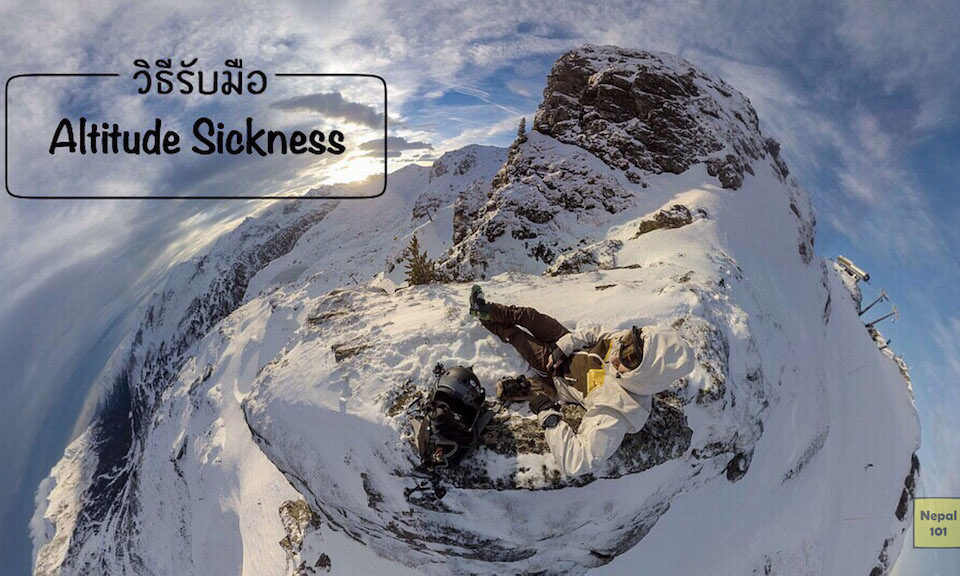So you booked your trip to an amazing trekking-adventure in the Himalayas, and as you research more about the trip, you frequently come up with the term altitude sickness or AMS (Acute Mountain Sickness). All of a sudden you are scared and would like to know more.
Well, that is exactly what we have in our blog for you today – The basics of altitude sickness aka AMS. Read this blog and trust me, it will potentially help save your life up in the mountains.
The When:
When do you experience altitude sickness:
As the name AMS – Acute Mountain Sickness suggests, one might start experiencing altitude sickness at higher elevations. The symptoms are seen usually after a sudden elevation gain to around 2400 meters (~ 8,000 feet).
The How:
The science behind altitude sickness:
WebMD states that altitude sickness occurs when you cannot get enough oxygen from the air at high altitudes. As you gain elevation (reach a higher altitude), the air becomes thinner, meaning, the air has less amount of oxygen. Naturally, if there is relatively less amount oxygen in the air, your lungs find it difficult to absorb oxygen from the air and supply it to your body. So when your body doesn’t have enough oxygen, you might experience symptoms like headache, loss of appetite and sleeplessness.
Symptoms breakdown:
Initial symptoms include headache, dizziness, nausea, shortness of breath, difficulty sleeping and extreme lethargy.
Advanced or severe symptoms include rapid pulse, irrational behaviour, loss of balance and coordination, severe headache, vomiting and persistent cough.
The What:
What do you do prevent altitude sickness?
1. Acclimatize:
One of the best ways to prevent AMS is to acclimatize, meaning let the body adapt to the current altitude before gaining more altitude. Spend a day or 2 in a lower elevation before gaining more elevation.
2. Ascend Gradually:
Don’t rush your trekking experience. Remember it is not the destination, but the journey that is important. We recommend keeping the altitude gain to less than 500 meters a day. This helps your body adapt to the elevation and reduces the chances of developing symptoms.
3. Hydrate, Rehydrate and then drink some more water:
Trekking is exhausting, you’re sweating, making your body work, metabolism occurs at a higher rate than normal, meaning your body needs to refuel on fluid, minerals and salt. One of the best things you can do for your body’s overall well-being is to make sure you stay hydrated. If your body is strong and fueled properly, the chances of developing symptoms are lower. Since alcohol dehydrates the body, save beers and alcohol for the after party when you’ve reached a safer elevation, it is much more enjoyable then.
4. Eat the good stuff:
Ever wondered why they called it “Daal Bhat Power 24 Hour”? Well, the staple Nepali food has all the essential minerals to provide the necessary fuel to the body. Regardless of what you eat, make sure your body is refueling with minerals and salts in addition to the fluid. Good Food = Healthy Body = Amazing Trekking experience
5. Listen to your body:
By following the above points, you will increase your odds of staying healthy throughout your trek, but each person’s body reacts differently to altitude so pay close attention to how you feel and how your body reacts. Frankly speaking, around 75% of people experience mild symptoms of altitude sickness, however, it will not interfere with normal activity and the symptoms should subside as acclimatization occurs. As long as the symptoms are mild, it’s generally okay to continue hiking up at a moderate rate.
I think I have AMS, my body doesn’t feel normal, what should I do?
Talk to your guide:
The first thing you should do, If you feel like you are developing any of the above symptoms is to talk to your guide immediately. Not only is your well being a part of their job, but they are trained to handle such situation and help you start feeling better. They will decide how to move forward once they understand how you are feeling. However, here are a few things that you can do as well –
If you experience mild AMS symptoms:
- Don’t ascend any higher.
- Drink lots of water
- Rest
- Once symptoms have subsided, which could take two to three days, it should be ok to start ascending again. Do so slowly and with awareness.
In case of severe AMS symptoms:
- Descend immediately (at least 500m).
- Seek medical attention IMMEDIATELY.
- Request your guide for rescue immediately
At higher altitudes, the brain is not getting enough oxygen, so you might not be thinking properly or your body’s reaction might not be as quick and sharp as it would normally react. Make sure you communicate with your trekking crew if you have any difficulties. Do not be hesitant to request for a rescue, your life and wellbeing should be the number one priority.
Disclaimer: This article is supposed to help provide basic information about AMS and how to prevent it, the Nepal101 team is not responsible for any harm that might occur because of the information provided in this blog. We recommend consulting appropriate medical personnel to find more about AMS.







